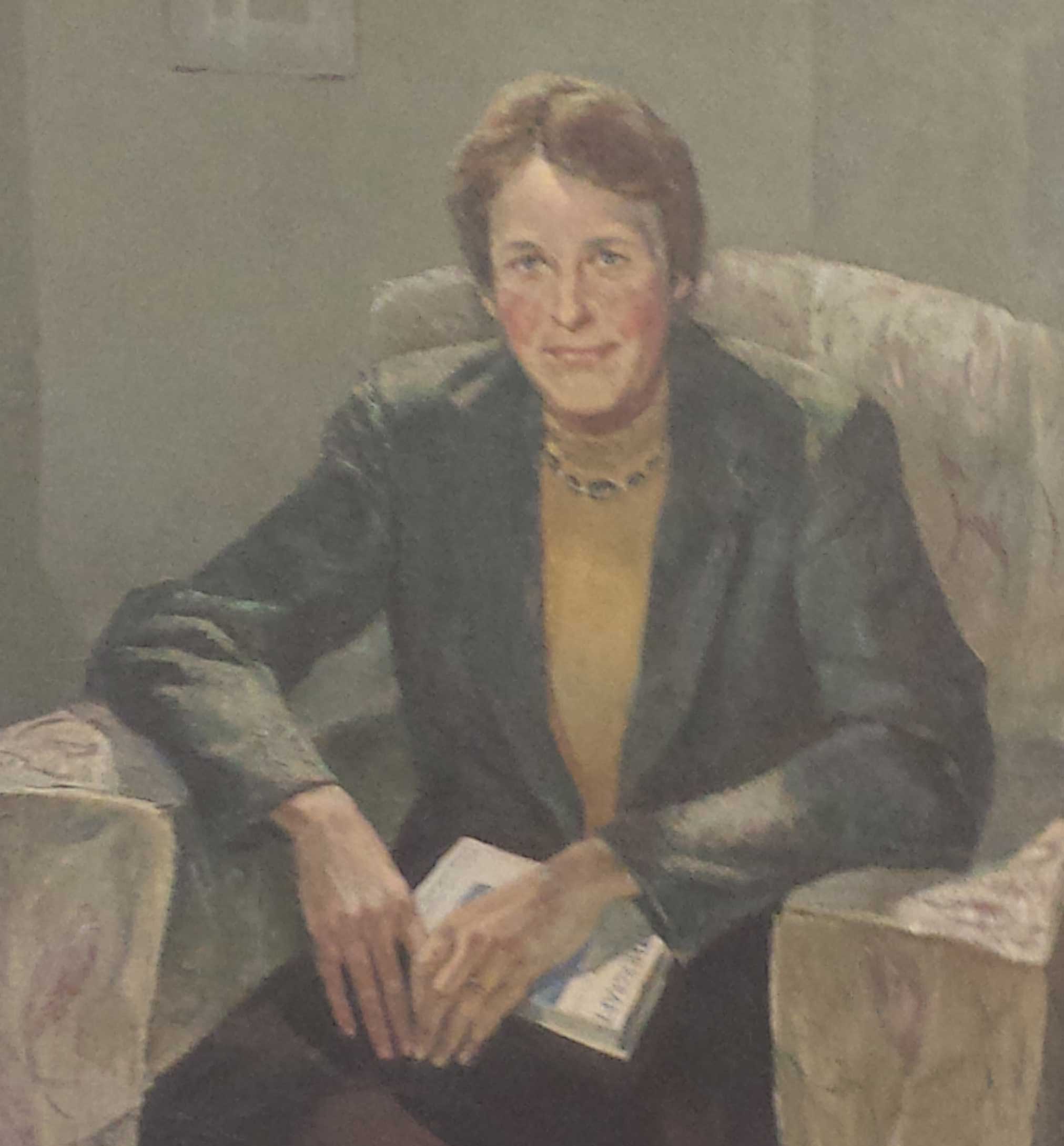14 : Story's end
Barbara had for some years suffered from diabetes, which she endeavoured to control by dietary means.
However she eventually received daily insulin injections. In August 1957 she suffered a coronary attack and
was confined to bed for some months. When recovered, she moved from the big house at Ainslie Hill farm to the
White Cottage, which she shared with Kate Miles until her death.
Kate recalled, "Television and reading were our pleasures...books that she enjoyed most were those pertaining
to the soil." Both women also shared a deep Christian faith.
After another coronary episode in February 1959, Barbara reluctantly resigned her position as President and Nurse
Director of Mothercraft. She died on 22 June 1959.1
After her death the Canadian Mothercraft Society commissioned a portrait of Barbara which now hangs in the
Toronto headquarters.

Last words
It is appropriate I feel to end with some final anecdotes and recollections from two surviving people who knew
Barbara personally - nieces Barbara Lovatt and Anne Russell.
Barbara Lovatt
On the subject of death, one day, I was with my aunt when she was filling her car at the village gas station in
Sutton West. It was a village where everyone knew everyone. The local funeral director was taking delivery of a
swanky new Cadillac hearse. My aunt leaned out her car window and said to him, "and you needn't think you're going
to get me in that thing!"
As for my aunt being labelled "domineering", some members of our wider family may have agreed with that.
However, in my opinion, she was a very determined woman, dedicated to her chosen work, was not intimidated
in male-dominated situations, and she was a battler for what she perceived as her "calling" in this life.
I admired these traits in her.
Anne Russell
My impression is that it was a happy marriage spoken of as "Irve and I". The design and
furnishing of the house reflected this. Books, pictures and furnishings tell their own story.
Irve's grand piano at Auldearn and Paul Robeson, a guest when in Toronto, confirm his love of music.
The book 'The Canadian Mothercraft Society' portrays Tot as a martinet, able to outshout
any man, whose visits to the hospital were feared. Not so. As Tot was a person of quiet
authority who never needed to raise her voice. Her authority (at the Mothercraft training school) was
unobtrusive.